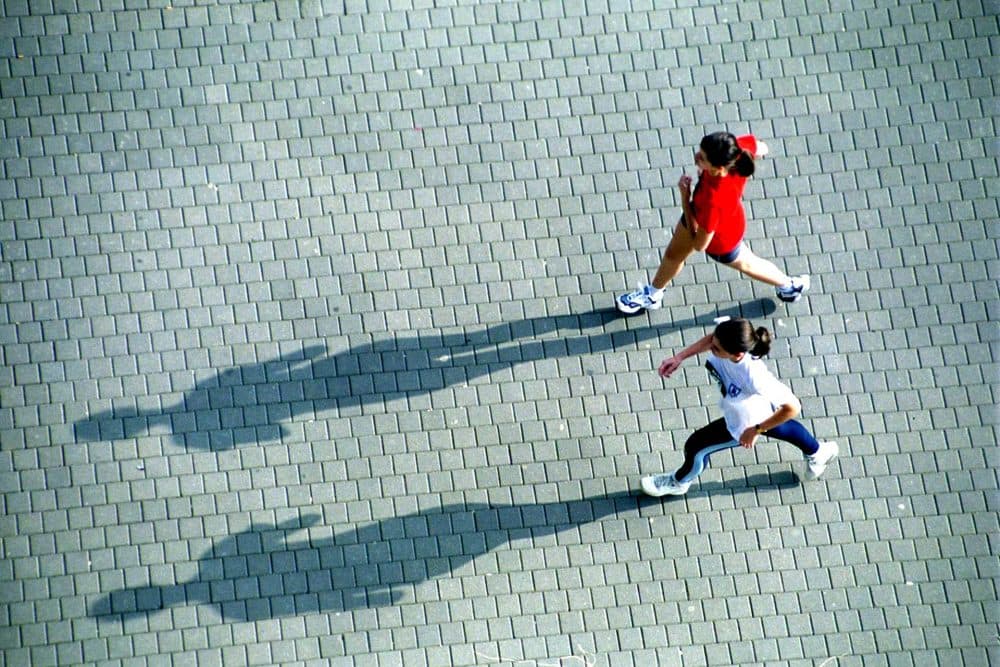Advertisement
Study Finds A Rare, 'Small Silver Lining' Of Climate Change: More Exercise

This is obvious: If it's 10 degrees below zero outside, chances are you won't see many runners on the street. But on a 70-degree spring day, you'll spot more.
Given this link between weather and exercise, how will climate change affect it? That’s what one researcher at Harvard's Kennedy School of Government wanted to understand.
A study published Monday in the journal Nature offers an answer: Overall, we're likely to see higher rates of physical activity as our country gets warmer.
"That could correspond to increases in benefits that we receive from being more physically active," said lead author Nick Obradovich, a postdoctoral fellow at the Kennedy School. "This is one of the very rare studies that has shown some small possible benefits associated with warming for the United States."
It is, he said, a "small silver lining amidst a sea of negative impacts otherwise."
Obradovich and his colleague, James Fowler, paired historical weather patterns with reported trends of how frequently Americans exercise — anything from taking a stroll outside to going on a bike ride — and found that extreme temperatures, as well as rain, reduce physical activity.
Fast forward to 2099. Here's how Obradovich described his main finding:
Places that are cold in the U.S. at least through much of the year — and even places that are relatively warm, but in colder months — if the historical behaviors persist, more people are likely to engage in physical activity throughout the year on net, at least up to 2099.
More, but by how much?
Obradovich estimates a 2.5 percent overall increase in physical activity. In other words, he says, future exercise patterns in February 2099 will look a lot like they do in present March.
So, is there an ideal temperature that will get Americans out of the house?
Not necessarily. People's rates of reported exercise grew with increases in temperature, up to 82 to 84 degrees Fahrenheit.
But this predicted trend varies by region, according to the season. And, with climate change, there will be places too warm to exercise (as there are currently), which could be bad news for the South.
“There are places, especially in the South and in the summer, that go beyond that peak and start to decline on the function that we estimate," Obradovich said. "When you have, for example, warming in July in Phoenix, we expect that that may produce reductions in physical activity."